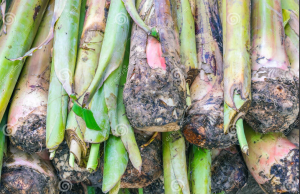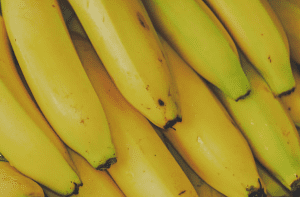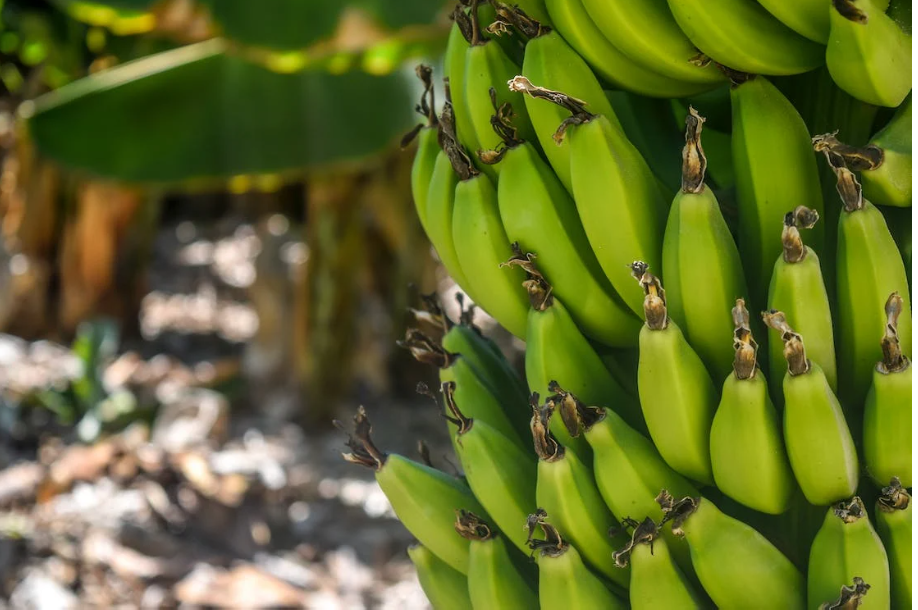Banana can be addressed by its:
Preferred Botanical Name: Musa Acuminata
Preferred Common Name: Banana
Local Common Name:
- Ibibio: Mburo
- Yoruba: Ogede
It also have different names according to the tribes and language
Origin Of Banana
Musa Acuminata, commonly known as banana, is a large herbaceous flowering plant in the genus Musa.
Bananas are indigenous fruits local to the tropical region of Indomalaya and Australia and must have originated in Papua Guinea. Bananas are elongated, edible fruit; they vary in size, color, and firmness.
They have soft flesh that contains starch covered with a rind which may be green, red, dark-purple, or yellow, depending on the species. Banana plants are often mistaken for trees or palms – they are herbs. The fruits grow in clusters, growing from the top of the plant and hanging down.
They can be propagated from rhizomes or suckers, and they can yield within 9 to 12 months of planting.
Potassium is an essential nutrient present in bananas.
Nutritional Composition Of Banana
A medium-sized banana (100 grams) has the following nutritional facts:
- Calories: 89
- Water: 75%
- Protein: 1.1 grams
- Carbs: 22.8 grams
- Sugar: 12.2 grams
- Fiber: 2.6 grams
- Fat: 0.3 grams
Medicinal Properties And Uses Of Banana
Below are some of the benefits of bananas:
- Blood sugar level regulation after meals and appetite reduction are among the benefits of eating bananas.
- Bananas may safeguard against colon cancer due to the fiber and resistant starch content.
- Bananas are high in fiber and low in calories; these nutrients aid weight loss.
- Potassium and magnesium are nutrients present in bananas which are essential nutrients for heart health.
- It can reduce damages from free radicals and lower the risk of some diseases because it is high in several antioxidants.
- Depending on ripeness, bananas harbor high amounts of resistant starch or pectin, which may help keep a person full or reduce appetite.
- Unripe bananas may improve insulin sensitivity because they are a good source of resistant starch.
- Eating bananas may reduce the risk of kidney disease by up to 50%.
- Bananas are suitable fruits for endurance exercise, and they may relieve cramps as a result of exercising.
How To Grow Banana
Yield Information Of Banana
Bananas take about 12 months to grow from seedling to fruit maturity. About 9 to 12 hands of fruits can come out of a stem, implying that a banana plant can produce up to 240 bananas.
Nursery And Transplant Requirements Of Banana
Bananas are propagated by their rhizomes called suckers or pups. Very small pups are called buttons. Large suckers are the preferred planting material. Suckers are removed from strong clumps with a spade during warm months; suckers must be at least 3 feet tall.
Do not remove suckers until a clump has at least three to four large plants to anchor it. Large leaves are cut off of the pup leaving only the youngest leaves or no leaves; ensure to plant close to the surface.

Soil And Sun Requirements Of Banana
The soil requirement must be rich compost soil with soil pH between 5.5 and 6.5. Bananas will survive in all soil types, but well-drained soil and organic soil are most suitable. Ensure that you do not plant on salty soil, as bananas do not thrive on it.
Sun requirement for bananas is full and direct sunlight for about 6 to 8 hours daily.
Watering Requirements Of Banana
Bananas require sufficient water for proper growth. Averagely, 4 to 6 inches of water is needed each month. During hot weather, ensure deep-water plants; do not let plants dry out. Banana requires about 900-1200 mm of water for its entire life, either through rainfall or manual irrigation.
Overwatering can result in root rot. Also, ensure that the soil does not become too saturated or boggy. Watering bananas is dependent on the season, either dry or wet season; more water is required during the hot season and less during the wet season.
Planting And Spacing Requirements Of Banana
The distance between banana plants is usually 2-3 meters apart, depending on the varieties planted and the management practices.
Harvesting Of Banana
Ready-to-harvest bananas are well rounded between the ribs, and the flowers at the tip of the fruits are dry and rub off easily. You can harvest your banana when you notice that the fingers have stopped growing and are fully matured. Harvesting banana fruit will require a sharp instrument like a machete.
Cut down the plant bearing the fruit, pull the bunch downwards, and make more cuts to finally cut the bunch from the tree.
Storage Of Banana
Bananas are often refrigerated or stored at room temperature. And can be kept for up to 4 days or more. The peel may turn dark brown, but the flesh will not be affected. You can use refrigerated bananas for smoothies.
Disease And Pest Of Banana
Anthracnose
This fungi disease causes brown spots on fruit peel and black lesions on green fruit. It is managed by protecting fruits from injury and removing flower parts that can harbor fungus.
Panama Disease
Fungi cause this; it causes yellowing of leaves, splitting of leaf sheaths, and death of the entire canopy. Control it by using disease-free suckers/corms/seeds.
Birds
Birds sometimes eat the fruit when it is left up for long. You can be controlled by using natural enemies and scarecrows.
Conclusion
Bananas are a true powerhouse when it comes to nutrition. They are packed with a wide variety of health benefits, making them a must-have in any balanced diet. These yellow fruits contain essential vitamins and minerals, such as potassium, vitamin C, and vitamin B6. In fact, the impressive amount of potassium in bananas can have a positive impact on heart health by regulating blood pressure and lowering the chance of stroke and other heart-related problems.
Not only do bananas contribute to our overall mental well-being, but they also contain high levels of vitamin A found in bananas that can benefit our vision health by potentially reducing our risk of developing age-related macular degeneration.

